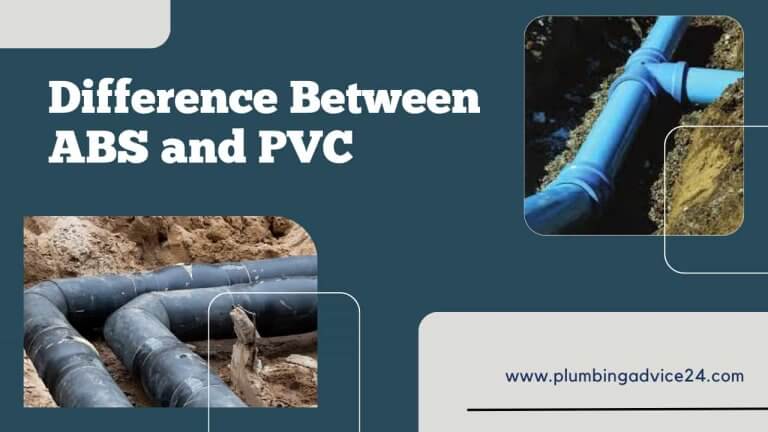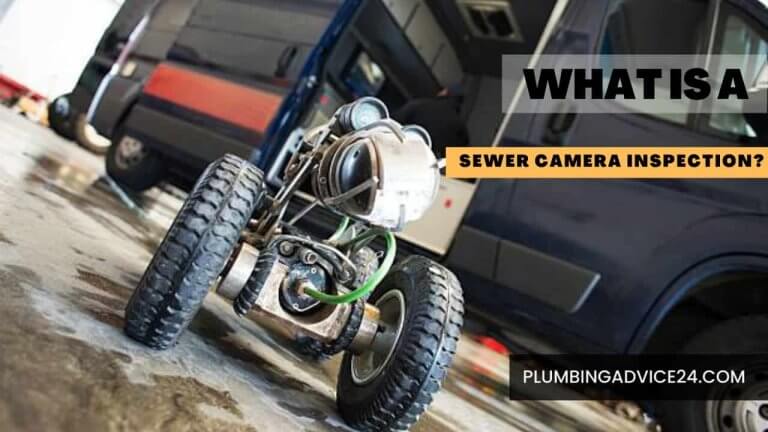Everything About Polyethylene Pipe
Polyethylene pipe is often referred to as PE pipe or poly pipe. It is a flexible, lightweight, durable, and corrosion-resistant plastic pipe that can be used for a wide range of liquid, gas, and fluid transfer applications. Poly pipe is also FDA-approved for use in food and beverage applications. Polyethylene plumbing pipe is completely safe and is one of the most common materials in the world. Read the full article to know more about PE pipes.
What Is Polyethylene Pipe?
Polyethylene, the English name “polyethylene,” known as PE, is a thermoplastic resin obtained by the polymerization of ethylene. PE pipe is manufactured by extrusion in sizes ranging from ½ inch to 63 inches. This pipe is available in rolled coils of various lengths or in straight lengths up to 40 feet.
PE pipe can be supplied in straight lengths or in coils, reducing the need for joints and fittings. The flexibility of PE pipe (polyethylene pipe) allows cost savings in installation. Trenchless technology can avoid the need for open trenches and minimize public and environmental disturbance by dragging long lengths of polyethylene pipes through holes underground, bored by mechanical moles.
Polyethylene pipe is available in many forms and colors, including single-extrusion colored or black pipe, black pipe with co-extruded colored striping, and black or natural pipe with co-extruded colored layer. PE pipe has been shown to be highly impervious to petroleum while retaining its flexible structure.
The last 50 years have seen significant progress in the production of PE pipes and PE fittings, and PE manholes which are now suitable alternatives to metal, PVC, GRP, and cast iron pipes. Project managers have approved them as a perfect option due to their strength, durability, and easy installation.
Must Read : What Is Plumbing Pipe Materials | What Is Used to Make Plumbing Pipes
How Is Polyethylene Pipe Made?
Polyethylene starts from natural gas or petroleum, which is extracted from crude oil and heated to release ethylene, which forms a branch-like structure to become polyethylene. In this case, lighter groups are called ethane (fractions), some of which combine with other catalysts to produce plastics. The process of making polyethylene pipes (corrugated single-walled pipes and double-walled pipes) is the extrusion method.
Let’s see the polyethylene pipes manufacturing process below:
- The raw material of polyethylene is fed into the extruder as granules and melted by heat.
- The molten material is advanced with a screw (spiral rod). After leaving the extruder, it is fed into the die head.
- Single-wall polyethylene pipe production lines are mainly extruders, and some lines have co-extrusion. Co-extrusion is used to inject colored raw materials and apply color markers to polyethylene pipes.
- A pipeline of corrugated two-wall pipe consists of two main extruders, one of which extrudes the corrugated outer layer material, and the other extruder extrudes the smooth inner layer material and inserts it into a mold for shaping.
- The material molded into the pipe-shaped die is then cooled and then extruded from the die. This is cut into the desired length, which becomes a polyethylene pipe and is ready for sale.
Must Read : What Is a PVC Pipe | How to Measure PVC Pipe Size | PVC Pipe Installation Cost
Polyethylene Pipe Lifespan
Polyethylene pipe systems are generally designed based on empirical and actual test data based on a service life of 50 years. But if properly designed, maintained, and installed, they can last up to 100 years.
Polyethylene was first developed in 1933 as a flexible, low-density coating and insulating material for electrical cables. Then it was used as a water pipeline. Since the late 1950s and early 1960s, polyethylene has entered every corner of our lives, starting a multi-billion dollar industry. It became the first plastic to sell over a billion pounds in a year in the United States and is currently the largest volume of plastic in the world.
Whether it is a matter of installing a new piping system or rehabilitating an existing system, certain requirements are placed on the piping material: that it is easy to install, that it does not leak or cost a lot to maintain, and that it will last a very long time. As long as polyethylene can satisfy these demands better than any other material, it will continue to grow in popularity.
What Is Polyethylene Pipe Used For?
PE water supply pipe is a replacement product for traditional steel pipes and polyvinyl chloride drinking water pipes. The pipe has a smooth inner wall, low friction resistance, good low-temperature resistance, corrosion resistance, safety and health, good flexibility, and other excellent features.
In addition, the product is light in weight, easy to install, handle, and connect convenient and reliable construction, and has a long service life of more than 50 years. It is mainly used in general water conveyance and potable water conveyance in temperatures below 40 degrees. Polyethylene pipes and fittings are widely used for gas and water distribution.
Applications of Polyethylene Pipe are as follows:
- Gas Pipeline
- Urban and Rural Water Supply Networks
- Municipal Breed Water Supply
Sewage Treatment Industry
Drainage Networks
Construction Water Supply
Farmland Irrigation
Plant Breed Water Supply
Pe-Rt Heating Pipes for Hot and Cold Water
Telecommunications Cable Coverings
Cable Sheathing Pipes
Power Cable Sheath
Metal Pipe Cover
Ventilation Channels
Must Read : Types of Metal Pipes | Seamless Vs Welded Pipes | Seamless And Welded Pipe Manufacturing Process
How to Measure PE Pipe?
All plastic pipe is measured on the outside diameter of the pipe, not the inside diameter. This is because the pipe needs to fit into the socket. PE pipes are also OD based. SDR stands for “Standard Dimension Ratio” in PE pipes and is used to rate pressure piping. It’s an inverse relationship, though. The higher the SDR, the lower the pressure rating. The SDR indicates how much pressure (in PSI) the PE pipe can withstand.
Determining the SDR of a PE pipe is quite simple. The formula is SDR = D/s, where ‘D’ is the outside diameter of the pipe (in millimeters or inches), and ‘s’ is the wall thickness of the pipe (in millimeters or inches). As the SDR decreases, the wall thickness increases. The tensile strength of a pipe increases as its thickness increases, which is the pipe’s ability to withstand pressure.
Measure the Outside Diameter (OD) of your polyethylene pipe or pipe fitting:
- Wrap a string around the pipe.
- Mark the point where the string touches together.
- Use a ruler or measuring tape to find the length between the tip of the string and the mark you made (circumference)
- Divide the circumference by 3.14159.
Note: You may also have heard the term “DR,” which stands for “dimension ratio.” When the dimension ratio of a pipe is one of the following, it is considered standard, which is recognized internationally. Standard aspect ratios fall within the ANSI preferred number range and include 9, 11, 13.5, 17, 21, 26, and 32.5. All SDRs are DR, but not all Drs are SDRs.
Polyethylene Pipe Sizes
Polyethylene is a thermoplastic material produced from the polymerization of ethylene. PE plastic pipe is manufactured by extrusion in sizes ranging from ½” to 63″. This is available in rolled coils of various lengths or in straight lengths up to 40 feet.
PE pipe dimensions are as below:
| SDR 26 | SDR 21 | SDR 17 | SDR 13.6 | SDR 11 | SDR 9 | SDR 7.4 | ||||||||
| PE 100 | PN 6.3 | PN 8 | PN 10 | PN 12.5 | PN 16 | PN 20 | PN 25 | |||||||
| SIZE | MIN WALL | MEAN I.D. | MIN WALL | MEAN I.D. | MIN WALL | MEAN I.D. | MIN WALL | MEAN I.D. | MIN WALL | MEAN I.D. | MIN WALL | MEAN I.D. | MIN WALL | MEAN I.D. |
| 20 | 1.6 | 16.7 | 1.6 | 16.7 | 1.6 | 16.7 | 1.6 | 16.7 | 1.9 | 16.1 | 2.3 | 15.2 | 2.8 | 14.2 |
| 25 | 1.6 | 21.7 | 1.6 | 21.7 | 1.6 | 21.1 | 1.9 | 21.1 | 2.3 | 20.2 | 2.8 | 19.2 | 3.5 | 17.7 |
| 32 | 1.6 | 28.7 | 1.6 | 28.7 | 1.9 | 28.1 | 2.4 | 27.0 | 2.9 | 26.0 | 3.6 | 24.5 | 4.4 | 22.8 |
| 40 | 1.6 | 36.7 | 1.9 | 36.1 | 2.4 | 35.0 | 3.0 | 33.8 | 3.7 | 32.3 | 4.5 | 30.6 | 5.5 | 28.5 |
| 50 | 2.0 | 45.9 | 2.4 | 45.0 | 3.0 | 43.8 | 3.7 | 42.3 | 4.6 | 40.4 | 5.6 | 38.3 | 6.9 | 35.6 |
| 63 | 2.4 | 58.0 | 3.0 | 56.8 | 3.8 | 55.1 | 4.7 | 53.2 | 5.8 | 50.9 | 7.1 | 48.1 | 8.6 | 45.1 |
| 75 | 2.9 | 69.1 | 3.6 | 67.6 | 4.5 | 65.7 | 5.5 | 63.6 | 6.8 | 60.9 | 8.4 | 57.5 | 10.3 | 53.6 |
| 90 | 3.5 | 82.8 | 4.3 | 81.1 | 5.4 | 78.8 | 6.6 | 76.3 | 8.2 | 72.9 | 10.1 | 68.6 | 12.3 | 64.5 |
| 110 | 4.3 | 101.2 | 5.3 | 99.1 | 6.6 | 96.4 | 8.1 | 93.2 | 10.0 | 89.3 | 12.3 | 84.4 | 15.1 | 78.6 |
| 125 | 4.8 | 115.3 | 6.0 | 112.8 | 7.4 | 109.8 | 9.2 | 106.0 | 11.4 | 101.4 | 14.0 | 96.0 | 17.1 | 89.5 |
| 140 | 5.4 | 129.1 | 6.7 | 126.4 | 8.3 | 123.0 | 10.3 | 118.8 | 12.7 | 1 13.8 | 15.7 | 107.5 | 19.2 | 100.2 |
| 160 | 6.2 | 147.5 | 7.7 | 144.4 | 9.5 | 140.6 | 11.8 | 135.8 | 14.6 | 129.9 | 17.9 | 123.0 | 21 .9 | 114.7 |
| 180 | 6.9 | 166.2 | 8.6 | 162.6 | 10.7 | 158.2 | 13.3 | 152.7 | 16.4 | 146.2 | 20.1 | 138.4 | 24.6 | 129.1 |
| 200 | 7.7 | 184.5 | 9.6 | 180.5 | 11.9 | 175.7 | 14.7 | 169.8 | 18.2 | 162.4 | 22.4 | 153.6 | 27 .3 | 143.4 |
| 225 | 8.6 | 207.7 | 10.8 | 203.1 | 13.4 | 197.6 | 16.6 | 190.9 | 20.5 | 182.7 | 25.1 | 173.0 | 30.8 | 161.3 |
| 250 | 9.6 | 230.7 | 11.9 | 225.9 | 14.8 | 219.8 | 18.4 | 212.2 | 22.7 | 203.2 | 27.9 | 192.3 | 34.2 | 179.2 |
| 280 | 10.7 | 258.6 | 13.4 | 252.9 | 16.6 | 246.2 | 20.6 | 237.8 | 25.4 | 227.7 | 31.3 | 215.3 | 38.3 | 200.7 |
| 315 | 12.1 | 290.7 | 15.0 | 284.7 | 18.7 | 276.9 | 23.2 | 267.4 | 28.6 | 256.1 | 35.2 | 242.2 | 43.0 | 226.1 |
| 355 | 13.6 | 327.8 | 16.9 | 320.9 | 21.1 | 312.0 | 26.1 | 301.5 | 32.2 | 288.7 | 39.6 | 273.2 | 48.5 | 254.6 |
| 400 | 15.3 | 369.3 | 19.1 | 361.3 | 23.7 | 351.7 | 29.4 | 339.7 | 36.3 | 325.2 | 44.7 | 307.6 | 54.6 | 287.0 |
| 450 | 17.2 | 415.5 | 21.5 | 406.5 | 26.7 | 395.6 | 33.1 | 382.1 | 40.9 | 365.8 | 50.3 | 346.0 | 61.5 | 332.8 |
| 500 | 19.1 | 461.7 | 23.9 | 451.7 | 29.6 | 439.7 | 36.8 | 424.6 | 45.4 | 406.5 | 55.8 | 384.7 | – | – |
| 560 | 21.4 | 517.2 | 26.7 | 506.1 | 33.2 | 492.4 | 41.2 | 475.6 | 50.8 | 455.5 | – | – | – | – |
| 630 | 24.1 | 581.8 | 30.0 | 569.5 | 37.2 | 554.1 | 46.3 | 535.2 | 57.2 | 512.3 | – | – | – | – |
| 710 | 27 .2 | 655.6 | 33.9 | 641.6 | 42.1 | 624.3 | 52.2 | 603.1 | – | – | – | – | – | – |
| 800 | 30.6 | 738.8 | 38.1 | 723.0 | 47.4 | 703.2 | 58.8 | 680.0 | – | – | – | – | – | – |
| 900 | 34.4 | 829.5 | 42.9 | 813.8 | 53.5 | 791.6 | – | – | – | – | – | – | – | – |
| 1000 | 38.2 | 923.0 | 47 .7 | 904.2 | 59.3 | 879.8 | – | – | – | – | – | – | – | – |
Polyethylene Pipe Cost
Polyethylene pipe price per linear foot is between $5.00–$40.00. In order to obtain and use the price of suitable PE pipes, polyethylene pipe types (mm and inches), high pressure, high pressure, and atmospheric pressure and load price list are specified according to the standard table of polyethylene pipes.
To buy PE pipe, you should also pay attention to the diamonds other than the price. For sensitive applications under pressure or for projects requiring polyethylene welding, higher-quality pipes should be used. Unfortunately, most PE pipe manufacturers use waste in their pipes.
For supplying water to industrial complexes and refineries, it is necessary to use high-quality PE pipes, which should not be recycled material as per standard. All new materials must be used. Therefore, if the price of PE pipe is lower than the price of polyethylene material, make sure that the pipes do not contain waste in production.
Advantages of PE Pipe
Polyethylene is a lightweight, durable, and easy-to-install pipe material. PE pipe has many other characteristics, due to which its use is increasing nowadays.
The advantages of PE pipe are as follows:
- Polyethylene pipes can be stored or used outdoors for up to 50 years, and the sun’s ultraviolet rays will not damage polyethylene pipes.
- Polyethylene pipe will not corrode, rot, pit, corrode, tuberculate, or support biological growth. It has excellent chemical resistance and is the material of choice for many harsh chemical environments.
- PE heat fusion joining creates leak-free joints that are as strong as or stronger than the pipe itself.
- The wear resistance of PE pipes is 4 times that of steel pipes. In the field of sludge transportation, compared to steel pipes, PE pipes have better wear resistance, which means that PE pipes have a longer service life and better economy.
- The smooth surface and non-adhesive characteristics of PE pipe ensure that the pipe has a higher transmission capacity than conventional pipes and also reduces agricultural irrigation polyethylene transmission.
- PE pipes are lighter than concrete pipes, galvanized pipes, and steel pipes. It is easy to handle and install and requires less manpower and equipment, which means that the installation cost of polyethylene pipes is greatly reduced.
- PE pipe installation is cost-effective and has long-term cost benefits due to the pipe’s physical properties, leak-free joints, and reduced maintenance costs. PE pipe, if installed properly, is estimated to have a service life of 50-100 years.
- The typical operating temperature range for pressure service of PE pipe is from 0°F to 140°F. However, the material can easily handle much lower temperatures for non-pressure and specialized applications.
- PE pipelines have different construction techniques. In addition to traditional excavation methods, it can also use a variety of new non-excavation techniques such as pipe jacking, directional drilling, lining pipes, and split pipes. In some sites that do not allow excavation, these pipes are the only option.
Disadvantages of PE Pipe
Despite the many advantages associated with polyethylene pipes, this type of pipe is not resistant to oxidizing acids, ketones, and chlorinated hydrocarbons, according to Manufacturers Monthly.
The disadvantages of PE pipe are as follows:
- PE pipes are expensive, and the pipe is now acceptable with constant promotion prices, but the cost of pipe fittings is still very high.
- PE pipes cannot be used as hot water distribution lines.
- Hot melt welding of PE pipe joints requires high pressure and a long cooling time.
- Polyethylene is mainly extracted from petroleum or natural gas, which can only be produced in limited quantities.
- The production of polyethylene takes up a large amount of energy and leads to high emissions of carbon dioxide, a greenhouse gas that contributes to global warming and climate damage.
- Polymers, like many other plastics, take a long time to break down, so they cannot be disposed of quickly, and using incineration to dispose of them can result in harmful gas emissions.
- Although it is technically possible to recycle most plastic polymers, there are different ways to recycle them, which are expensive and complicated.
Must Read : Difference Between ABS and PVC | How to Connect ABS to PVC Pipe | Which Is Better ABS Pipe or PVC Pipe
FAQ
What Is PE Pipe?
PE Pipe is a thermoplastic resin obtained by the polymerization of ethylene. PE pipe is manufactured by extrusion in sizes ranging from ½ inch to 63 inches. This pipe is available in rolled coils of various lengths or in straight lengths up to 40 feet.
Can I Use Polyethylene Pipe for Drinking Water?
The short answer is yes; used for potable water applications since the 1960s, high-density polyethylene (HDPE) pipe has become the ideal material for piping systems used to transport potable water.
What Does SDR Stand for in Pipe?
The standard dimension ratio (SDR)—also referred to as the standard dimensional ratio, is a measurement and method often used by pipe manufacturers to rate the working pressure capacity of a pipe. It is calculated by determining the relationship between the pipe’s outside diameter to its minimum wall thickness.
What Is the Difference Between PE and HDPE Pipe?
HDPE is a type of PE pipe. However, HDPE pipes are more durable than other PE pipes because they come with high melting and impact points. HDPE pipe is tough, resistant to chemicals, resistant to corrosion, and light in weight.
How Strong Is Polyethylene?
Polyethylene is of low strength, hardness, and rigidity but has high ductility, impact strength, and low friction. It shows strong creep under persistent force, which can be reduced by the addition of short fibers. It feels waxy when touched.
Is Polyethylene Harmful to Humans?
Polyethylene has been extensively reviewed by regulatory authorities and determined to be non-hazardous by normal routes of exposure, including skin contact, inhalation, and ingestion.
Why Is Polyethylene Bad for the Environment?
The major impact of plastic bags on the environment is that it takes many years for them to decompose. In addition, toxic substances are released into the soil when plastic bags perish under sunlight, and if plastic bags are burned, they release a toxic substance into the air causing ambient air pollution.
Is Polyethylene Environmentally Friendly?
Bio-based polyethylene is perfect for those who are looking to reduce the number of carbon emissions they create in the world, lower their overall energy consumption and protect the environment.
Does Polyethylene Have BPA?
PET plastic (polyethylene terephthalate) is the plastic most commonly used in single-use plastic water bottles. It is BPA-free, but PET is also associated with many of the same health risks, such as stunted growth, reproduction issues, low energy levels, body balance issues, and inability to process stress.
What Is the Difference Between PVC and Polyethylene?
PVC is a durable vinyl polymer, whereas PE is a polyethylene thermoplastic made from petroleum. Both pipes are strong through high temperatures. When comparing failure ratings when exposed to events like rain, stress, wind, heat, or cold, PE is proven to be more durable.
How Long Does Poly Pipe Last?
Poly pipe delivers strong, long-lasting performance with a lightweight price tag. Conservatively expected to last 50-100 years by the Plastic Pipe Institute.
If You Liked This Post? So Share It with Your Friends
Suggested Articles :
- What Is Plumbing Pipe | 22 Different Types of Plumbing pipes
- What Is Pipe Fittings | 12 Types of Pipe Fittings And Their Works
- What Is Plumbing Trap | 15 Different Types of Plumbing Traps And Their Uses
- What is Plumbing Tools | 31 Types of Plumbing Hand Tools And Their Uses
- What Is a Wrench | 33 Different Types of Wrenches | Best Company for a Wrench















